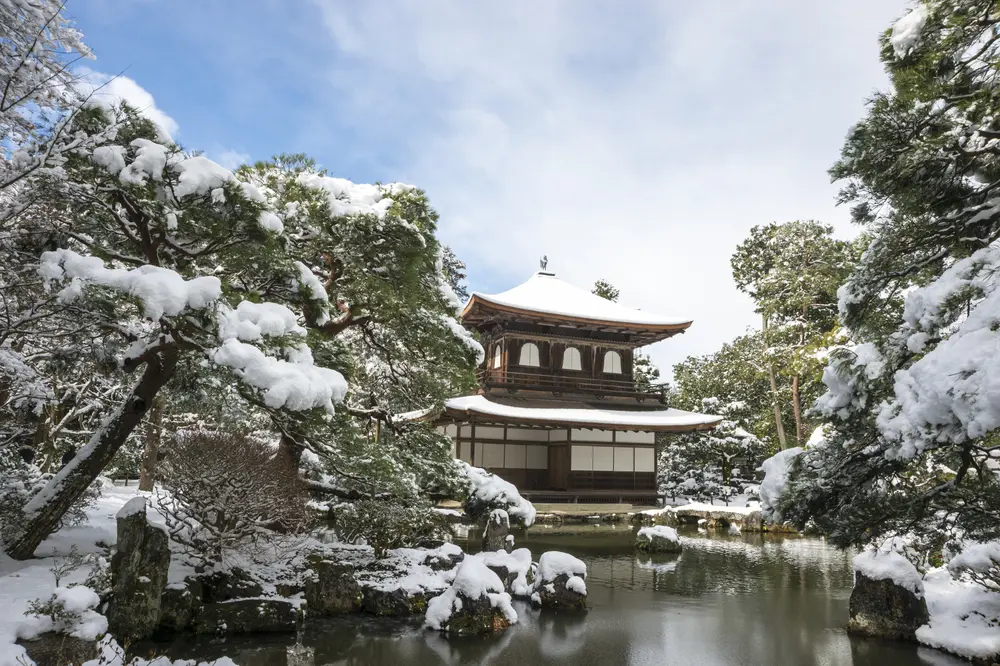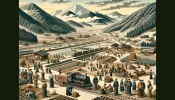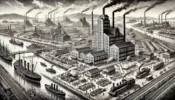Kyoto in the Muromachi Period: A Golden Age of Culture and Power(1336-1573)
Let’s travel back in time to Kyoto’s Muromachi period (1336-1573), a vibrant era that saw the city flourish as a center of culture, politics, and economic power. This fascinating chapter in Kyoto’s history is marked by the establishment of the Ashikaga shogunate, the flowering of arts and Zen Buddhism, and the devastating Onin War. Join us as we delve into the key events, cultural achievements, and lasting legacy of this transformative period.
Establishment of the Muromachi Shogunate and the Relocation of the Capital to Kyoto
The Muromachi period began with the establishment of the Ashikaga shogunate by Ashikaga Takauji in 1338. Takauji, a powerful samurai, overthrew the Kamakura shogunate and consolidated his power by relocating the capital from Kamakura to Kyoto. This move revitalized Kyoto, which had been in decline since the end of the Heian period.
Under the Ashikaga shogunate, Kyoto underwent significant urban development. The shogun’s residence, known as the “Flower Palace” (Hana no Gosho), became the political and cultural heart of the city. The Muromachi-dono, the shogun’s administrative headquarters, was also established in Kyoto, further solidifying the city’s status as the seat of power.
The Flowering of Muromachi Culture: Kyoto’s Aesthetic Legacy
The Muromachi period was a golden age for culture in Kyoto. The city became a hub for artistic and intellectual activity, with the Ashikaga shogunate actively patronizing various forms of art, literature, and religion. Zen Buddhism, in particular, flourished during this time, influencing everything from architecture and garden design to painting and calligraphy.

One of the most iconic examples of Muromachi culture is the Kinkaku-ji (Golden Pavilion), a Zen temple built by shogun Ashikaga Yoshimitsu. The temple’s shimmering golden exterior, reflected in the surrounding pond, is a testament to the aesthetic sensibilities of the era.
●Related Posts
→Kinkaku-ji: The Golden Pavilion of Kyoto – A Comprehensive Guide

Another notable example is the Ginkaku-ji (Silver Pavilion), built by Yoshimitsu’s grandson, Ashikaga Yoshimasa. Although originally intended to be covered in silver leaf, the project was never completed due to the outbreak of the Onin War. Nevertheless, the temple’s elegant design and serene Zen garden are considered masterpieces of Muromachi architecture.
●Related Posts
→Ginkaku-ji Temple: Unveiling the Unexpected Beauty of Kyoto’s Silver Pavilion
The Muromachi period also saw the emergence of new art forms, such as ink wash painting (sumi-e) and Noh theater. These art forms, which emphasized simplicity, elegance, and spiritual depth, continue to be cherished today.
The Onin War and Kyoto’s Devastation
The Onin War (1467-1477), a decade-long conflict between rival factions of the Ashikaga clan, brought devastation to Kyoto. The city became a battleground, with much of its infrastructure and cultural heritage destroyed. The war also led to a decline in the shogunate’s power, paving the way for the turbulent Sengoku period (1467-1615).
Transition to the Sengoku Period: Kyoto’s Turmoil
The Onin War marked a turning point in Kyoto’s history. The city’s once-thriving economy and social order were shattered, and the Ashikaga shogunate’s authority was severely weakened. The ensuing Sengoku period was characterized by constant warfare and political instability, as powerful warlords vied for control of the country.
Kyoto, despite its weakened state, remained a coveted prize for these warlords. The city changed hands multiple times during the Sengoku period, with each new ruler leaving their mark on its landscape and culture.
Conclusion: The Legacy of Kyoto’s Muromachi Period
Kyoto’s Muromachi period was a time of great contrasts. It was an era of cultural flourishing and political power, yet also one of devastating war and social upheaval. Despite the challenges it faced, Kyoto managed to preserve much of its cultural heritage and even experienced a renaissance under the rule of Oda Nobunaga, who unified Japan in the late 16th century.
Today, visitors to Kyoto can still experience the legacy of the Muromachi period. The city’s temples, gardens, and traditional arts are a testament to the creativity and resilience of its people. The Muromachi period serves as a reminder of the importance of preserving cultural heritage, even in the face of adversity.
>NEXT
Kyoto in the Azuchi-Momoyama Period: A City Reborn(1573-1603)









